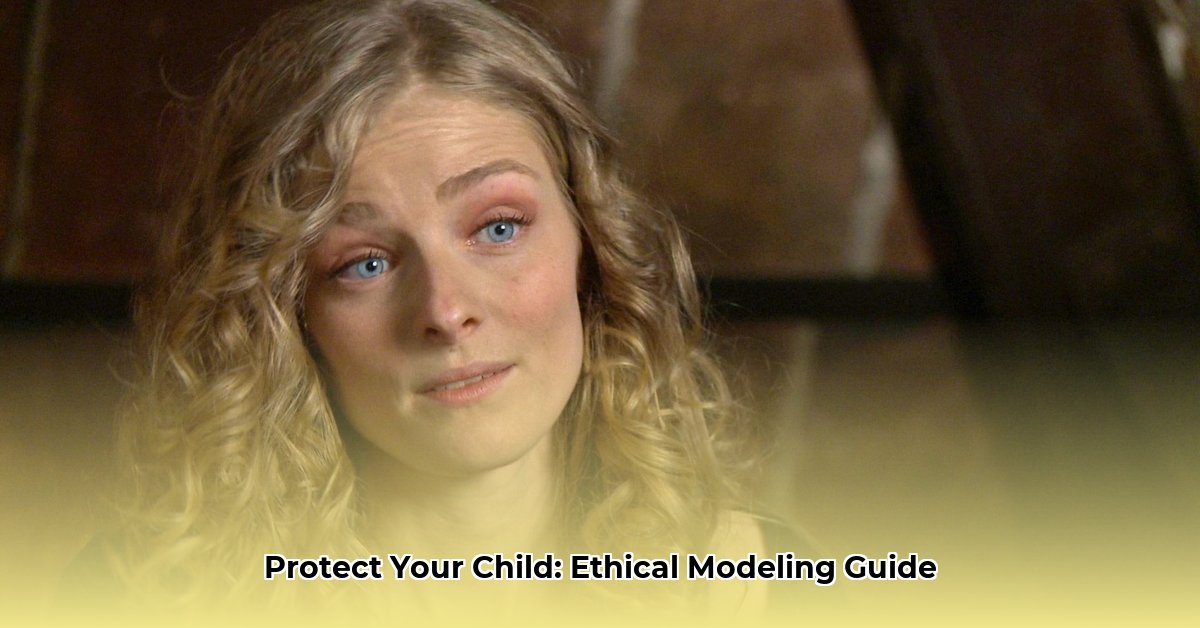
Navigating the Complexities of Child Modeling: A Comprehensive Guide
Thinking about your child pursuing a career in modeling? It's a world brimming with potential, but also fraught with hidden dangers. This guide provides a comprehensive understanding of the ethical and legal considerations to ensure your child's safety and well-being. We'll examine the potential benefits, address significant risks, and equip you with actionable steps to navigate this complex industry.
The Dual Nature of Child Modeling: Opportunities and Risks
Child modeling offers several potential advantages, including unique experiences, confidence-building opportunities, financial rewards, and portfolio development. However, these benefits must be carefully weighed against significant risks. The demanding nature of the industry, potential for exploitation, competitive pressures, and the impact on a child's self-image all require serious consideration.
How can we ensure that the potential benefits outweigh the inherent risks? This is a question that demands careful examination and proactive measures.
One in five children employed in modeling experience harmful conditions, highlights a recent study by the [Insert Source Name and Citation for Statistic]. This underscores the need for diligent oversight and preventative measures. "The industry needs a fundamental shift in its culture," says Dr. Emily Carter, Child Psychologist at [University Name]. "Prioritizing a child's well-being should always supersede financial gain."
Protecting Your Child: A Step-by-Step Action Plan
This process involves proactive planning and vigilant monitoring. Here's a detailed approach to guide you:
1. Comprehensive Research: Don't fall for glamorous websites alone. Thoroughly investigate any modeling agency, checking online reviews (while acknowledging potential biases), verifying credentials, and scrutinizing child protection policies. Ask challenging questions; skepticism is essential. This step alone can significantly improve safety.
2. Honest Conversations: Discuss modeling's realities with your child, emphasizing both the exciting and challenging aspects. Empower them to say "no" to anything uncomfortable, fostering open communication and mutual trust.
3. Seek Legal Expertise: Before signing any contract, consult a lawyer specializing in child entertainment contracts. Scrutinize details about image usage, payment, working conditions, and safety clauses. This can prevent future complications and protect your child's rights.
4. Select a Reputable Agency: Look for agencies that actively prioritize transparency and child protection. Inquire about background check procedures for all personnel. A hesitant agency is a significant red flag.
5. Consistent Adult Supervision: Ensure responsible adult supervision at all times your child is working. Ideally, a designated chaperone should focus exclusively on their well-being. This measure is crucial for minimizing risks.
6. Maintain a Healthy Balance: Prevent modeling from dominating your child's life. Prioritize their education, friendships, hobbies, and general childhood experiences. Balancing their career with a fulfilling personal life is essential for their overall well-being.
7. Prioritize Mental Health: The emotional demands of modeling can be significant. Regular check-ins with a therapist or counselor can provide vital support, building resilience and promoting healthy coping mechanisms. Given the high stress levels in the industry, this preventative measure is crucial for long-term mental health.
Legal and Ethical Minefields: Navigating the Gray Areas
Laws governing child modeling vary significantly across jurisdictions. Understanding your region's specific regulations is paramount. Even "non-nude" modeling requires strict adherence to all applicable laws. The definition of "non-nude" itself can be subjective. Always prioritize caution and strict guidelines to avoid any potential misinterpretations.
Transparency and Accountability: Your Active Role
Don't remain passive. Question brands about their ethical standards and child safety measures. Support companies that actively prioritize child welfare; your consumer choices have a powerful impact.
A Collaborative Approach: Building a Safer Industry
Creating a truly safe environment requires collaboration. Parents, agencies, lawmakers, and brands all share in this responsibility.
Actionable Steps for Stakeholders
| Stakeholder | Short-Term Actions | Long-Term Actions |
|---|---|---|
| Parents/Guardians | Thorough agency checks; open communication with children; legal advice. | Advocate for better child protection laws; support relevant organizations. |
| Modeling Agencies | Strong child protection policies; thorough background checks; transparent operations. | Invest in ethical training; develop clear guidelines; strengthen oversight mechanisms. |
| Legislators | Update and enforce child labor laws; create a central reporting system. | Develop international standards to protect child models worldwide. |
| Technology Companies | Improve content moderation tools; actively remove exploitative content. | Partner with child protection groups; develop AI-driven detection systems. |
| Brands | Demand transparency from agencies; prioritize ethical sourcing. | Support companies with robust child welfare policies; publicly commit to ethical practices. |
Remember: Your child's well-being takes precedence. By being informed, proactive, and vigilant, you can help them enjoy a positive and safe modeling experience. The future depends on our collective actions.